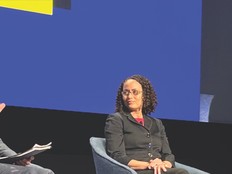How Innovation and Technology Can Get Around Budget Crunches
Government agencies can look for technology innovations beyond traditional contractors and systems integrators.
“Startups and innovative small businesses can have at least two overarching benefits: They can offer government agencies valuable new ways of solving longstanding problems, and they can provide cost-effective alternatives to larger, more well-established companies,” Deloitte notes in a report on “push innovation” in government. “As budgetary constraints continue to reduce available resources, new, innovative contracting models that increase accessibility to these entrepreneurs and reduce the complexity and cost of doing business with the government are increasingly needed,” the report notes.
Rebecca Gevalt, the managing director of government programs at Dcode, a firm that connects agencies and emerging tech companies to improve the way government runs, says that IT leaders need to reframe their focus from being proscriptive about specific technologies
“Gaps also exist between government innovation hubs and those charged with pushing an agency’s mission day in and day out,” she writes in Government Executive. “Federal agencies and their innovation hubs should work together to make sure they are on the same page about their greatest needs, the technology solutions that could potentially address those needs, and concrete ways to acquire what they need.”
Meanwhile, agencies can look to the model of the CIA-funded In-Q-Tel nonprofit venture capital arm, which identifies, invests in and advises startups to help the national security community.
The bottom line is that IT leaders need to do more to break out of their traditional ways of thinking about how to drive innovation. That includes tapping working capital funds, other transaction authority vehicles and piloting new technologies that can potentially scale over time.
VIDEO: What are the seldomly asked questions around emerging tech?
Agencies Can Use Modernized and Streamlined Procurement Tools
Agency IT and procurement leaders can also continue to spur innovation via modernized procurement practices and technologies.
Agencies should aim to move toward cloud-based procurement platforms that can cover their source-to-pay needs and be customized to meet the needs of individual agencies. Such solutions need to be modern and user-friendly for all users on both sides of the procurement equation.
“Comprehensive procurement technology platforms can help government agencies get started, identify reliable suppliers, make smart investments and enable transparency and compliance,” writes Ty Levine, marketing director for Ivalua, a firm specializing in spend management.
Working within the existing system is also getting easier. The long-awaited consolidation of General Services Administration schedules is underway, a process that will take most of the current fiscal year. While GSA officials say agencies and contractors will see little impact during the transition, it’s still a change they should be prepared for.
The GSA is morphing 24 of its multiple-award vehicles into one consolidated contracting vehicle, which should make procurement simpler and more efficient.
There will likely never be enough money as agency IT leaders want for technology modernization. However, that does not mean that innovation needs to grind to a halt. On the contrary, by looking for technology innovation outside of traditional areas and modernizing procurement processes and tools, agencies can keep driving toward the future.
This article is part of FedTech’s CapITal blog series. Please join the discussion on Twitter by using the #FedIT hashtag.











